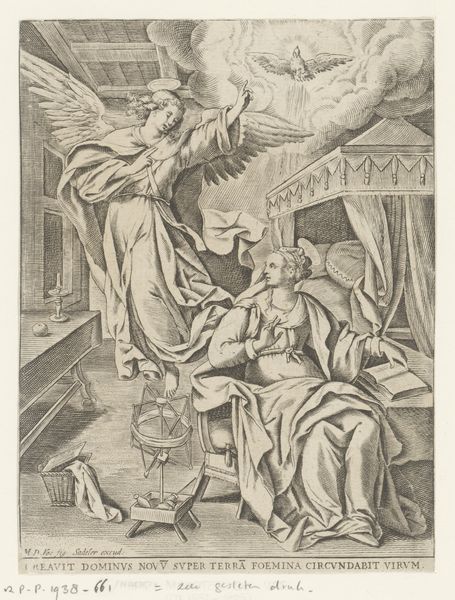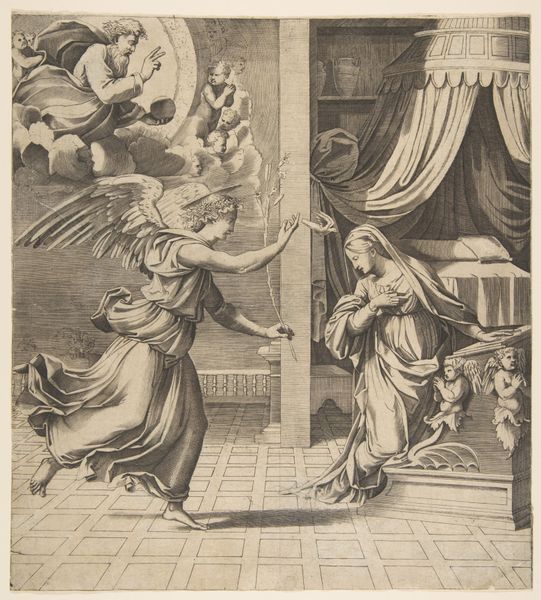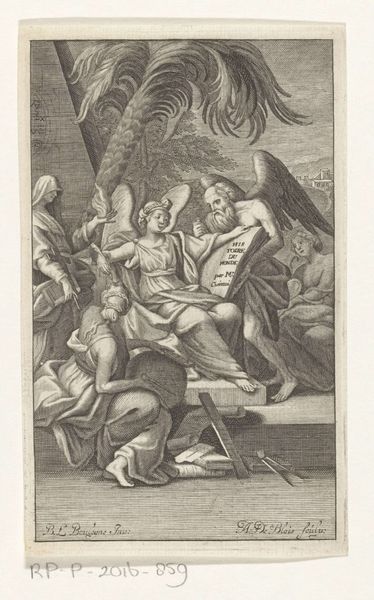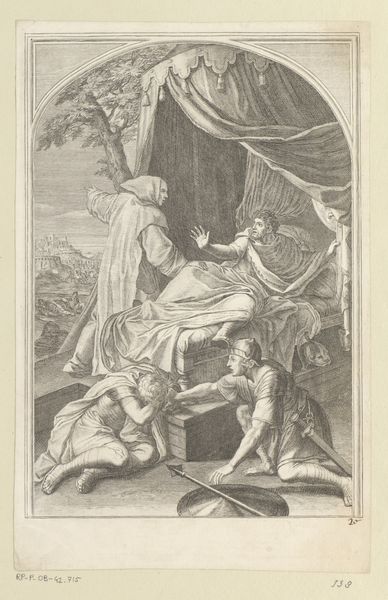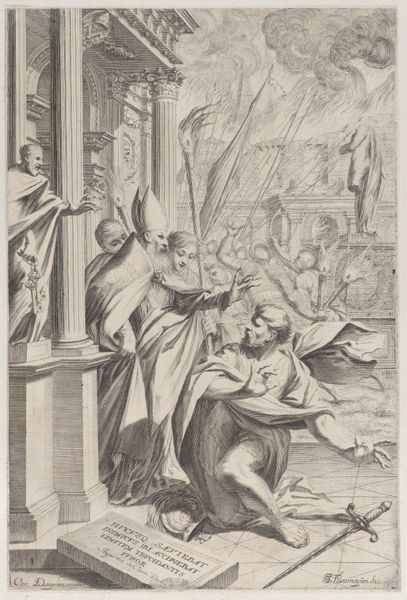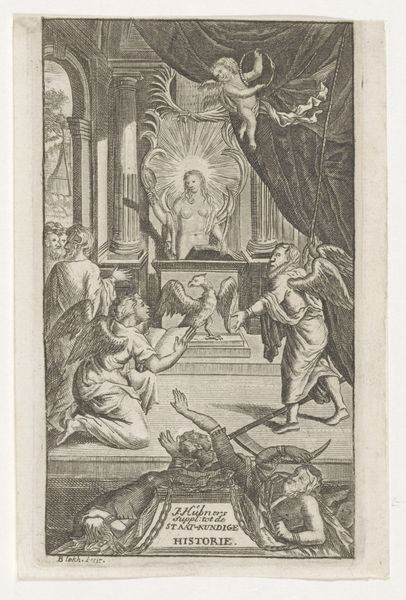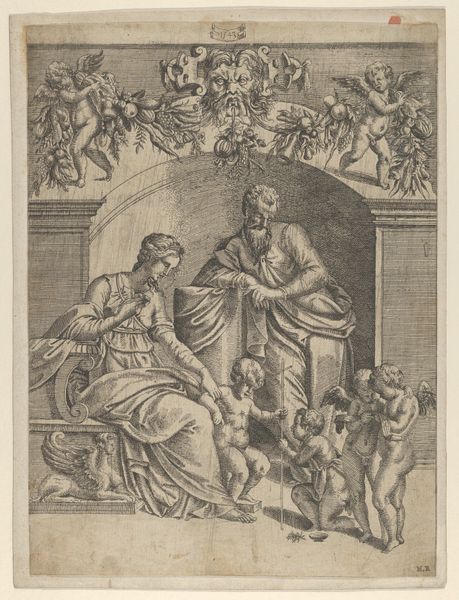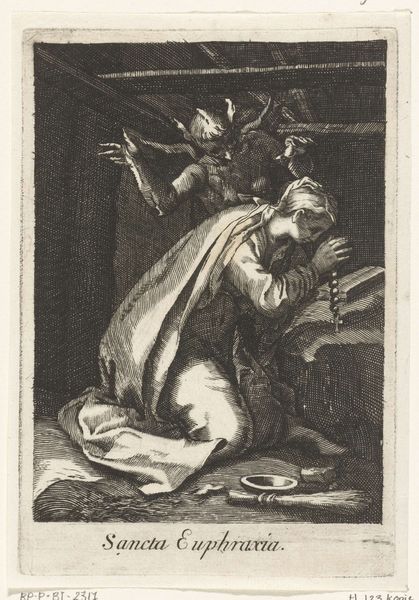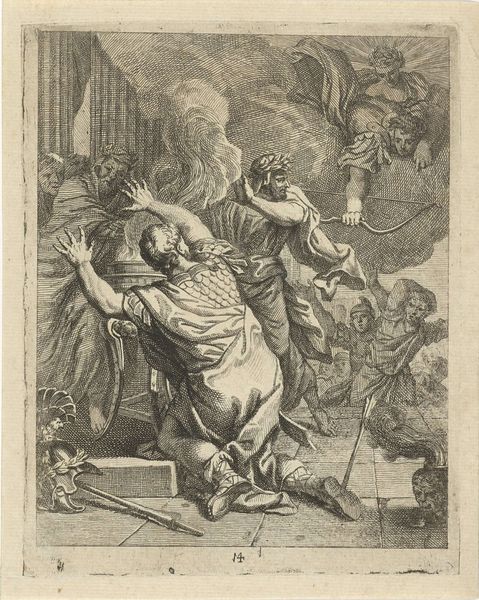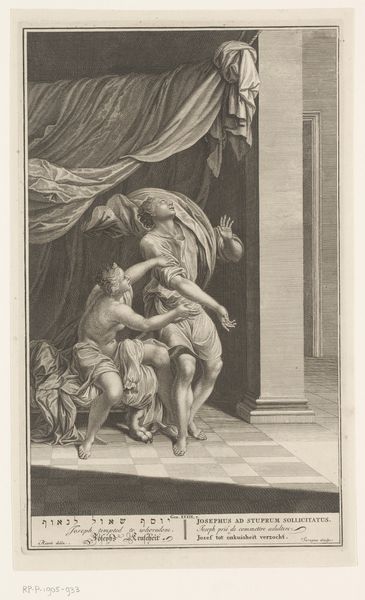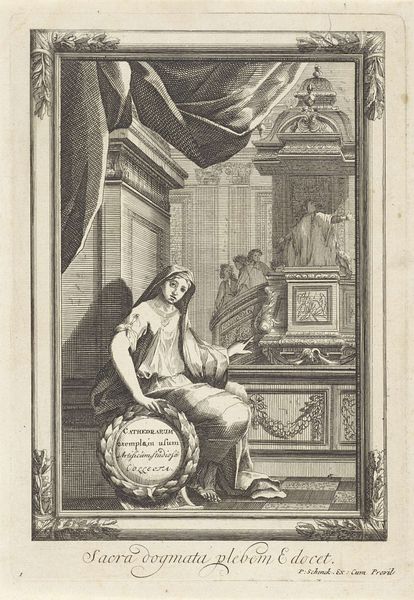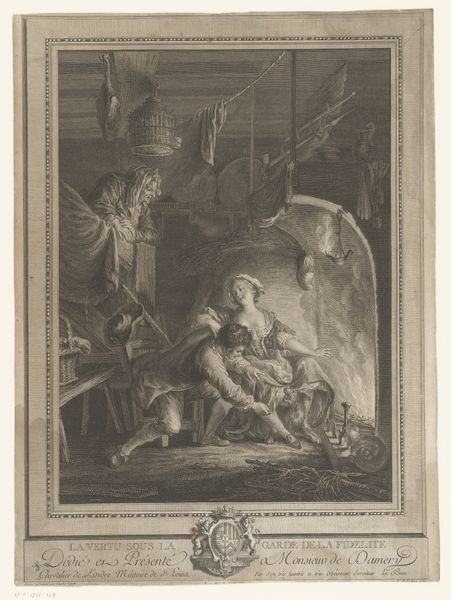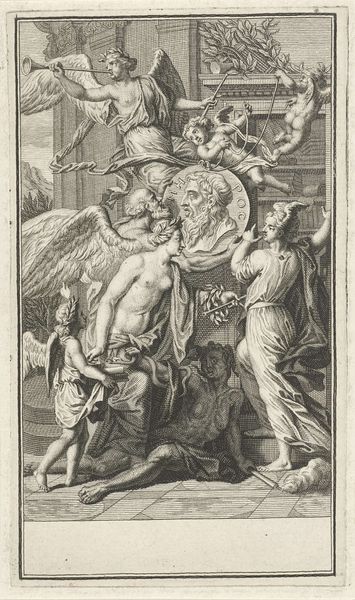
Engelen verschijnen in een droom aan de Heilige Bruno 1623 - 1676
0:00
0:00
print, engraving
#
baroque
# print
#
figuration
#
history-painting
#
engraving
Dimensions: height 330 mm, width 219 mm
Copyright: Rijks Museum: Open Domain
Curator: Here we have "Engelen verschijnen in een droom aan de Heilige Bruno," or "Angels Appearing to Saint Bruno in a Dream," a print made sometime between 1623 and 1676 after François Chauveau. It resides here at the Rijksmuseum. Editor: It's a quiet scene. A sleeping man startled, illuminated by angels, caught in this in-between place. There is a stillness to it that invites contemplation, don't you think? Curator: Yes, the stillness likely stems from the nature of engraving itself—the precision, the time involved in its production, really lends itself to a more introspective mood. The print medium democratized religious iconography, bringing it into homes, making it available for individual reflection. Editor: Interesting! For me it speaks of transcendence through something as mundane as sleep, where Bruno is taken away by these ethereal beings. There is something so simple in the ordinary way Bruno is positioned that gives it that dreamy quality. Look at his discarded shoes at the foot of the bed, very telling in how art mirrors life, but heightens our ability to notice it. Curator: The materials, being paper and ink, also influenced its distribution and use. Prints such as this weren't just art objects. Consider how the means of creating prints, using line, hatching, and stippling to replicate the appearance of the figures are linked to labor—craftsmanship turned into art. We also shouldn't overlook that inscriptions which accompanied many prints further enriched their meaning in their time. Editor: The very fact it depicts a dream makes it all the more poignant! A personal, internal space projected outward in a way only art can capture, don't you agree? I mean, who hasn't experienced such a revelation? I wonder how this might’ve played in the homes it was meant for back then. Curator: Well, thinking about consumption is very pertinent. How this print would be distributed to the workshops to learn, passed amongst private collections and traded, and the way it impacted contemporary understanding of art and the everyday socio-political and religious themes in ordinary life is really interesting. Editor: I find the conversation surrounding everyday life being affected or not depending on such illustrations so cool to hear. A thought I hadn't yet considered on the image.
Comments
No comments
Be the first to comment and join the conversation on the ultimate creative platform.
